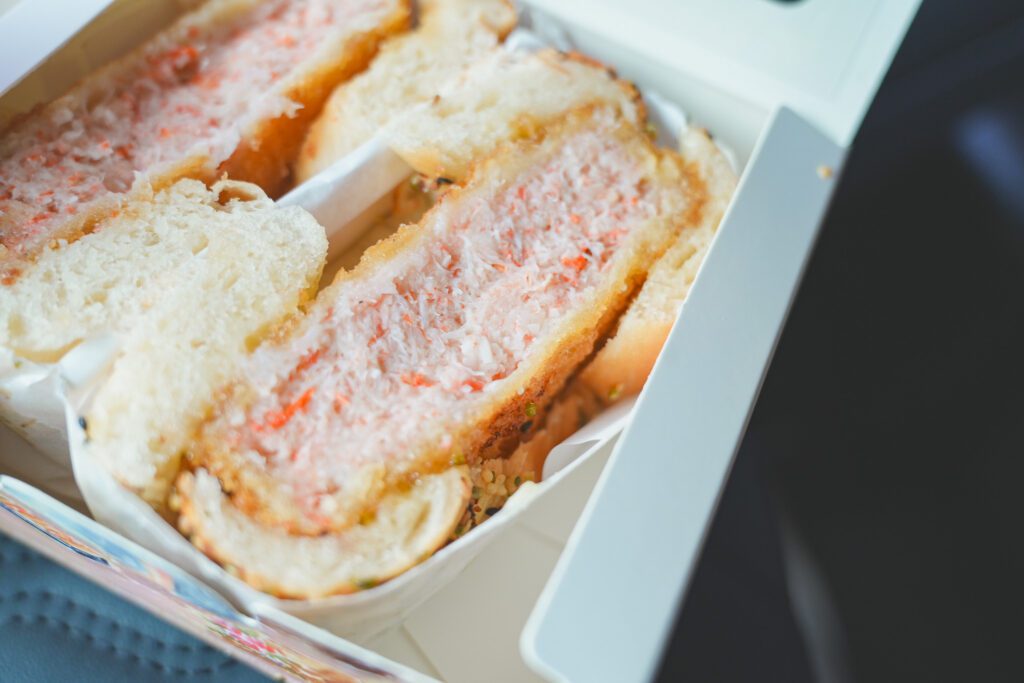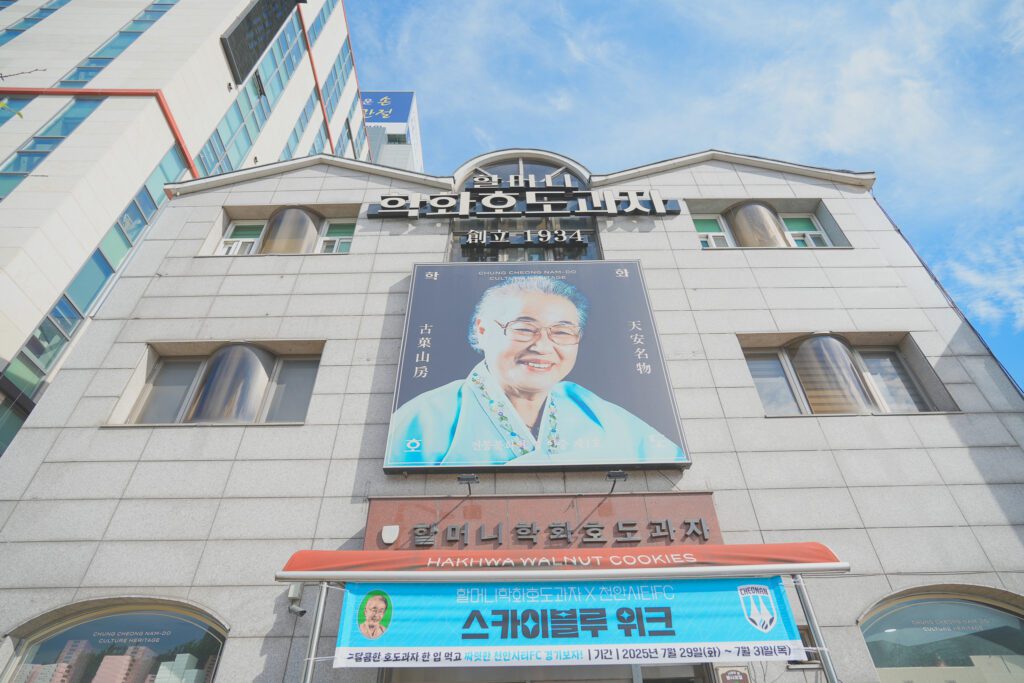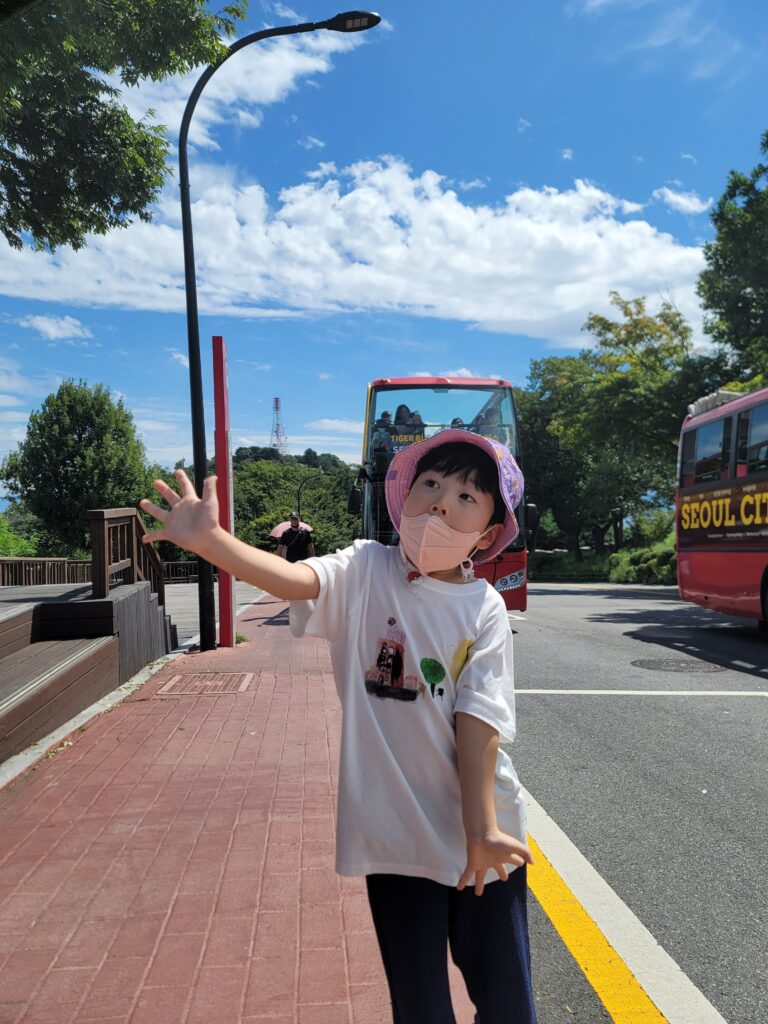Why I Travel: Isn't traveling the best way to grow taller?
Traditional markets in Korea are a favorite tourist destination for foreigners. In particular, Gwangjang Market, located near Myeongdong in Seoul, has become a must-visit tourist destination for foreigners in recent years because it offers a wide variety of Korean street food and a lively atmosphere.
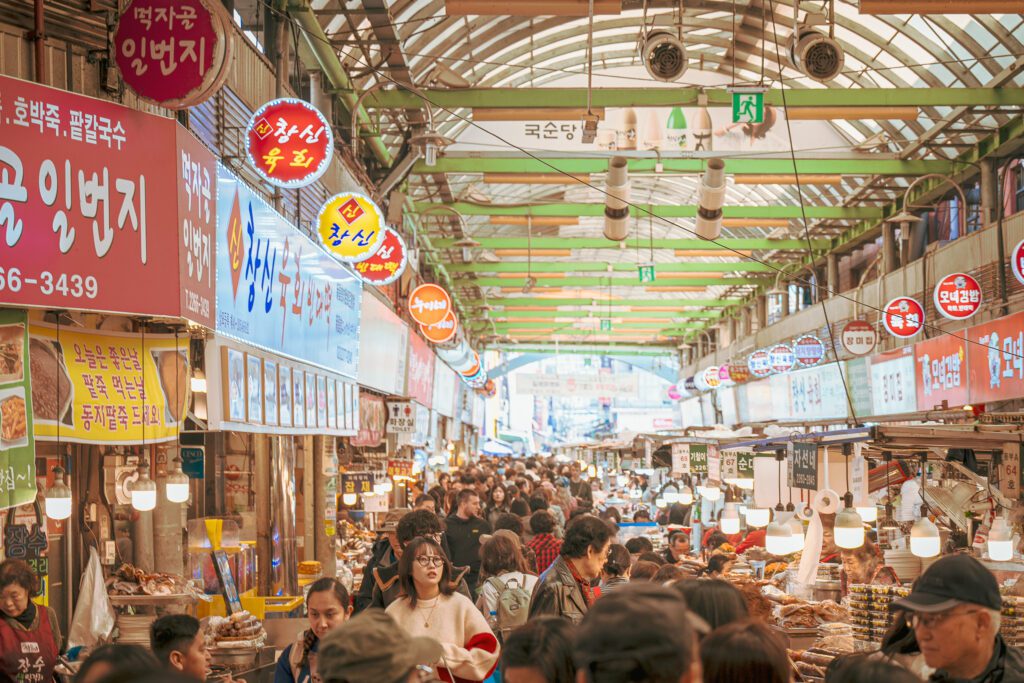
In fact, Gwangjang Market is attractive to Koreans because it has a long history, and there are many delicious foods such as yukhoe and bindaetteok. It used to be a market for the elderly in Jongno where they could get cheap alcohol and food.
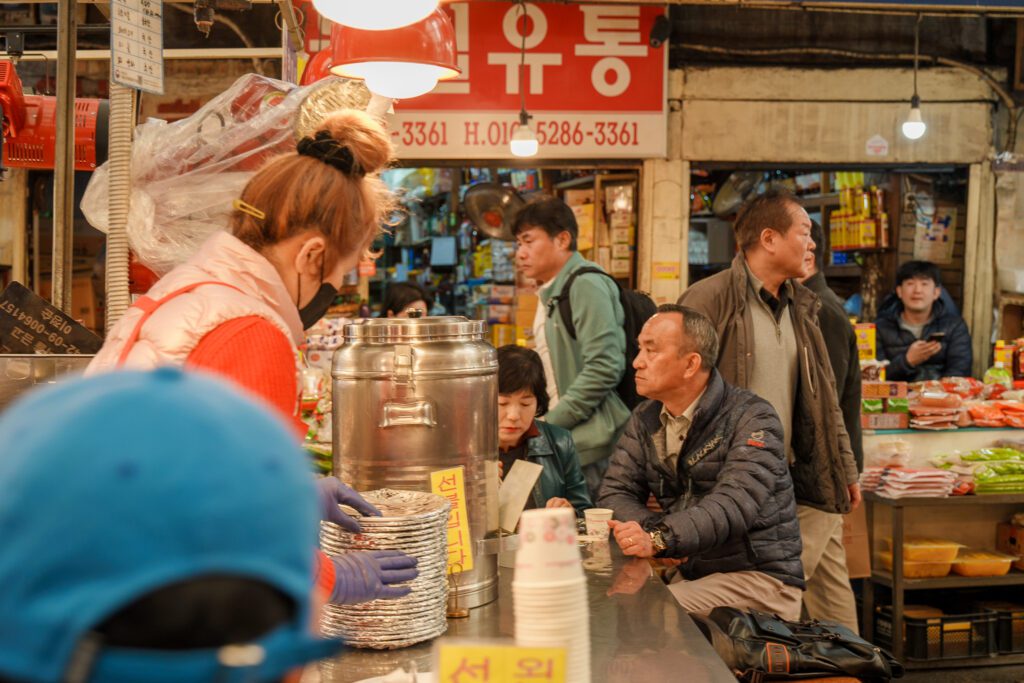
Dongdaemun Market and Namdaemun Market are the oldest markets in Seoul and were established in 1414 during the founding of the Joseon Dynasty. After the Japanese occupation of Korea, they were run as a monopoly by the Japanese.
Namdaemun Market became famous in the 1970s for its overseas imports, and was known as the “you can get everything” market. Dongdaemun Market is the center of fashion. While it served as a domestic wholesaler for clothing, it also served as a fashion shopping center for international tourists.
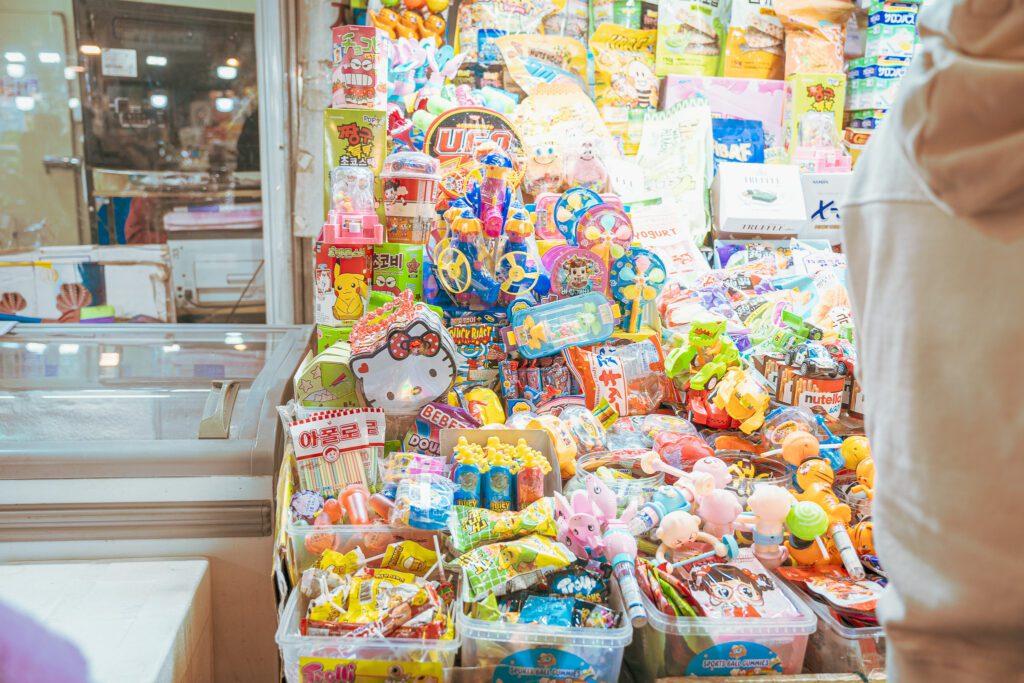
Until the 2010s, Namdaemun Market was the traditional market center with an average of 300,000 people per day and Dongdaemun Market with an average of 200,000 people per day. Gwangjang Market was visited by around 50,000 people. Seoul’s five largest markets are Namdaemun Market, Dongdaemun Market, Gwangjang Market, Pyeonghwa Market, and Jungang Market.
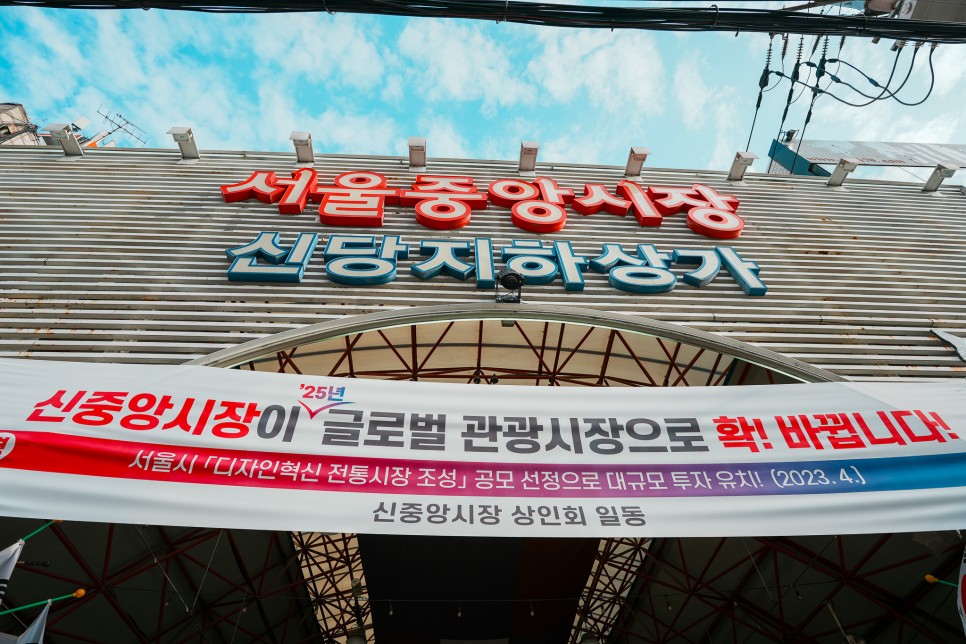
The most famous markets that have recently gained fame are Jungang Market and Gwangjang Market in Sindang-dong and Gyeongdong Market in Cheongnyangni. Personally, I would recommend Sindang-dong Jungang Market and Gyeongdong Market in Cheongnyangni to foreign tourists because the price and quality of food are better than Gwangjang Market, which is already commercialized.
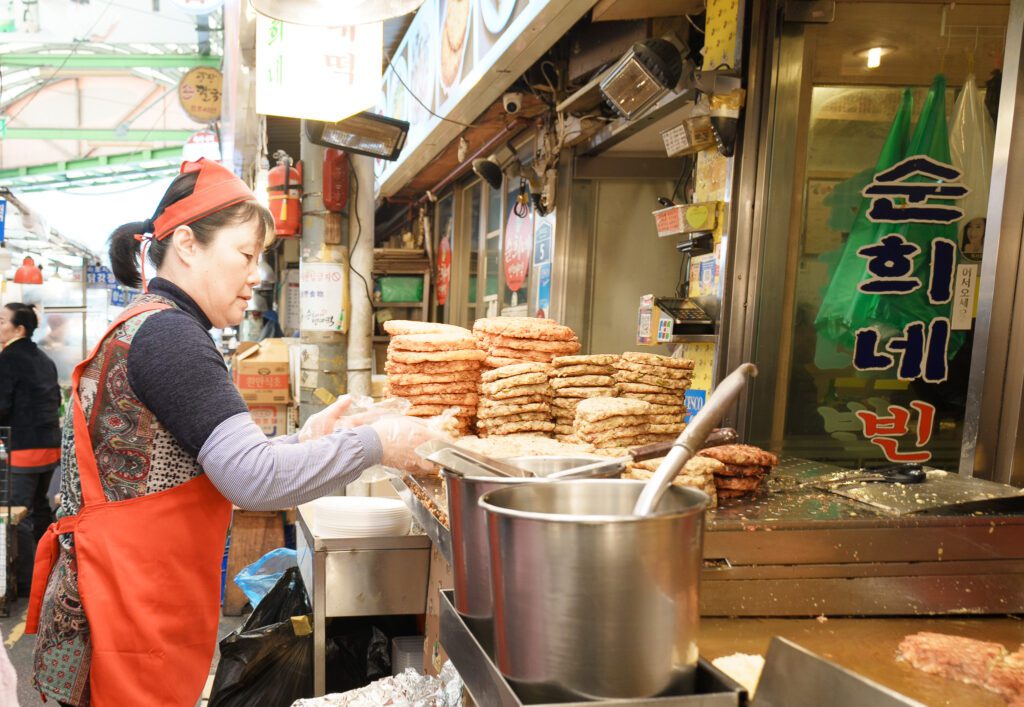
As you know, Gwangjang Market has been over-commercialized as it has become known overseas through Instagram, Reels, TikTok, etc. In the past, you could try a bowl of noodles and pancakes made with meat for 2,000 or 3,000 won, but now the price has more than doubled. There have also been many cases of unkindness and ripping off foreigners. There have been many uncomfortable reviews from tourists on the news, but it has not been eradicated.
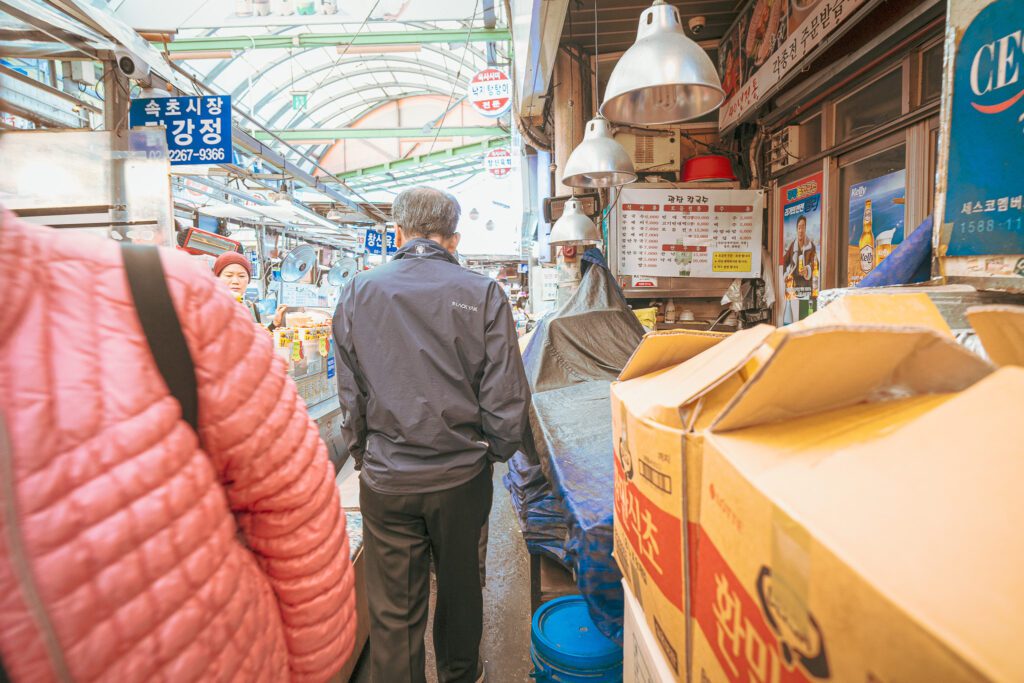
Of course, there are still many friendly and honest vendors, but many have lost their original intentions. Gwangjang Market was established in the early 1900s and was originally located between Gwanggyo and Janggyo on Cheonggyecheon Stream, hence the name Gwangjang Market.
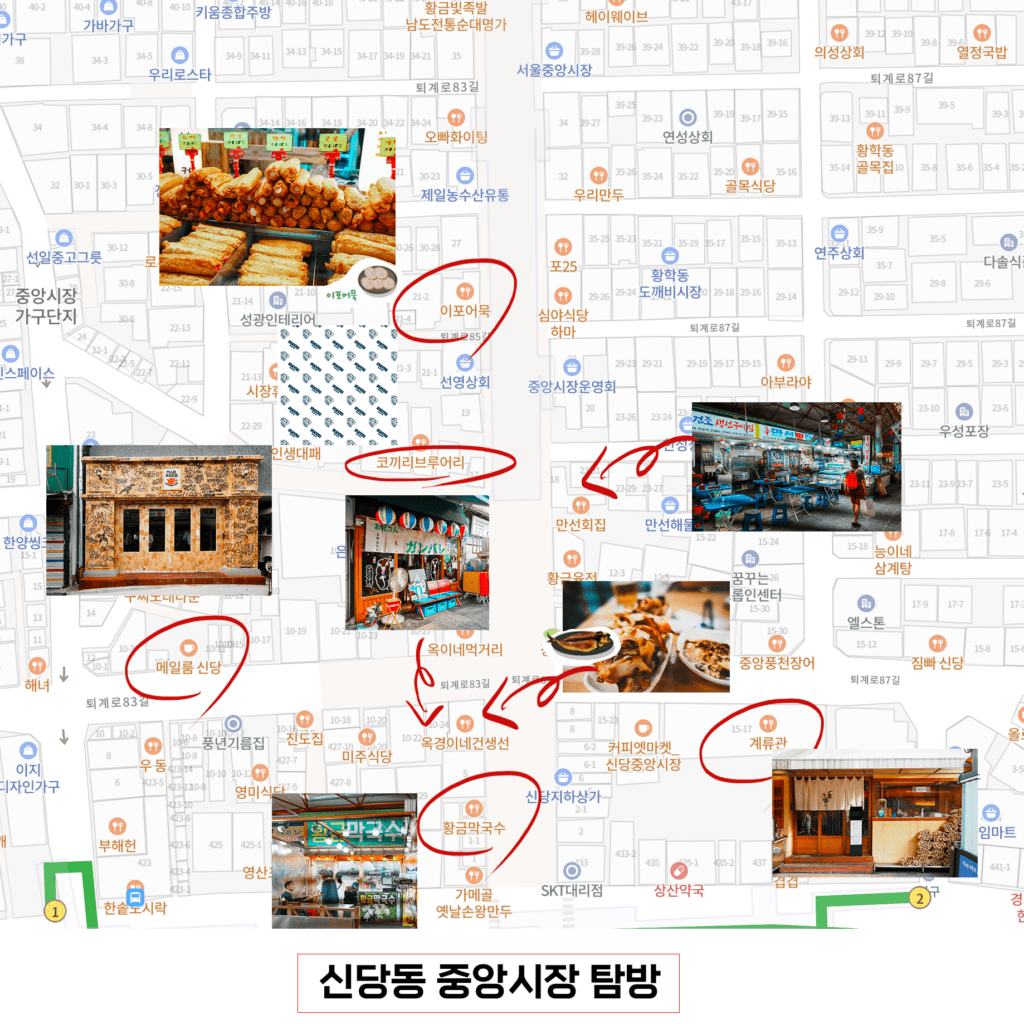
I would recommend the Jungang Market in Sindang-dong, which is accessible by Line 2. It’s a popular place for young people, and there are many hipster restaurants hidden in the alleys.
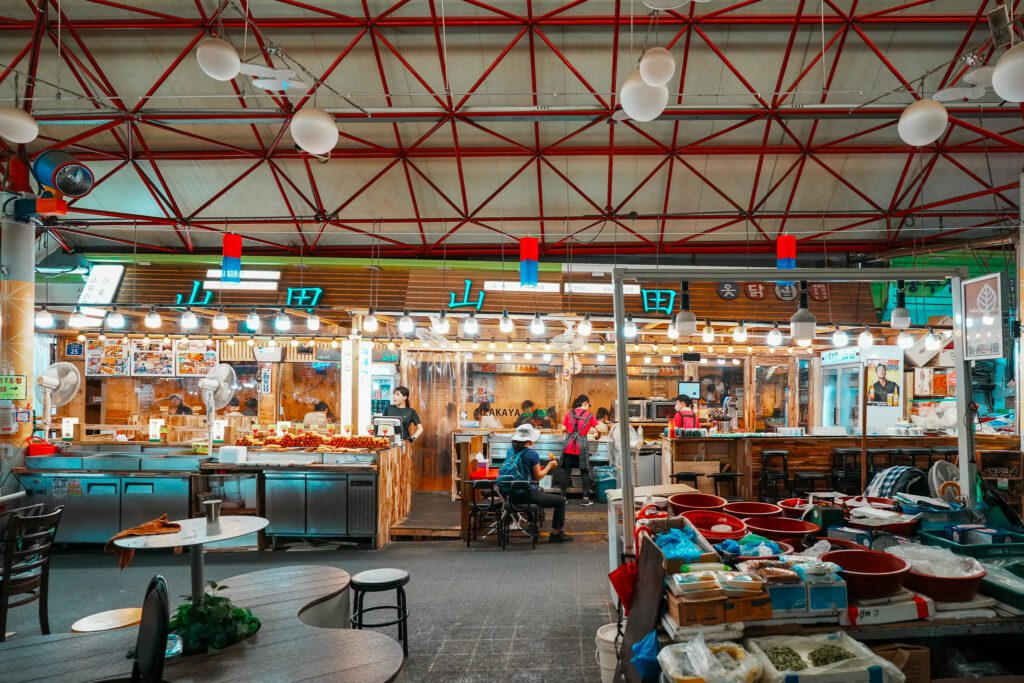
Ipo Fish Cake and Golden Makguksu are good value for money at Jungang Market. Okkyungine Dried Fish, famous for its grilled cuttlefish, is also worth a visit, as well as Elephant Brewery, Manseonhoejip, and Mailroom Sindang, which is known for its quirky concept cafes.
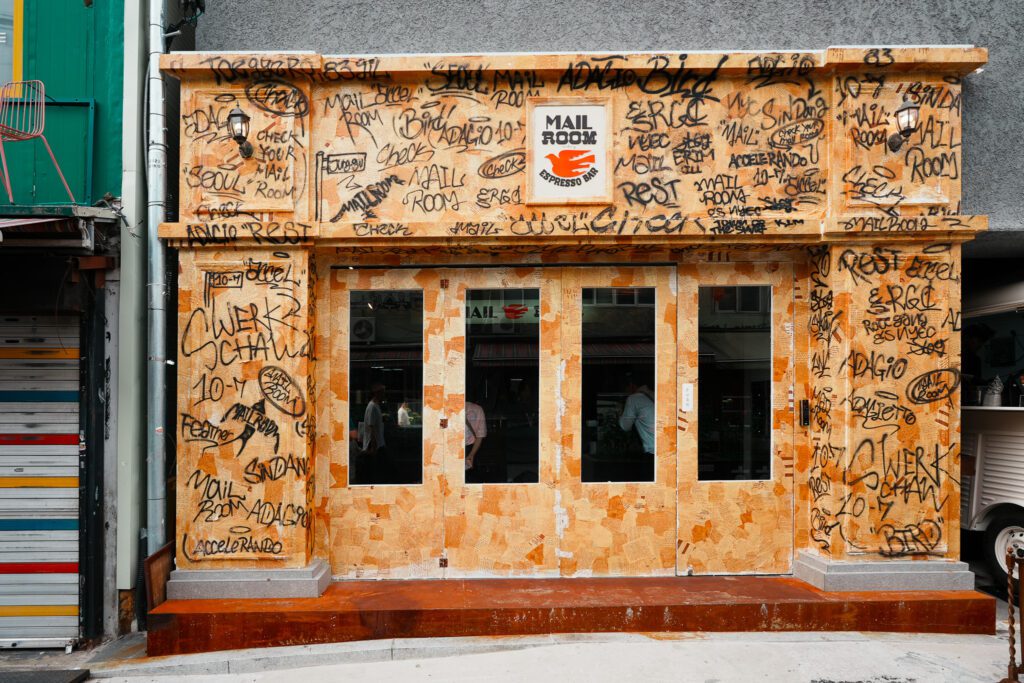
If you search for Sindang-dong Market, Sindang Jungang Market, etc. on Instagram, you will probably find quite a few restaurants. There are many interesting local markets other than the crowded and bustling concept of plaza markets, so I hope that visitors to Seoul will have fun and experience local markets with good memories.
